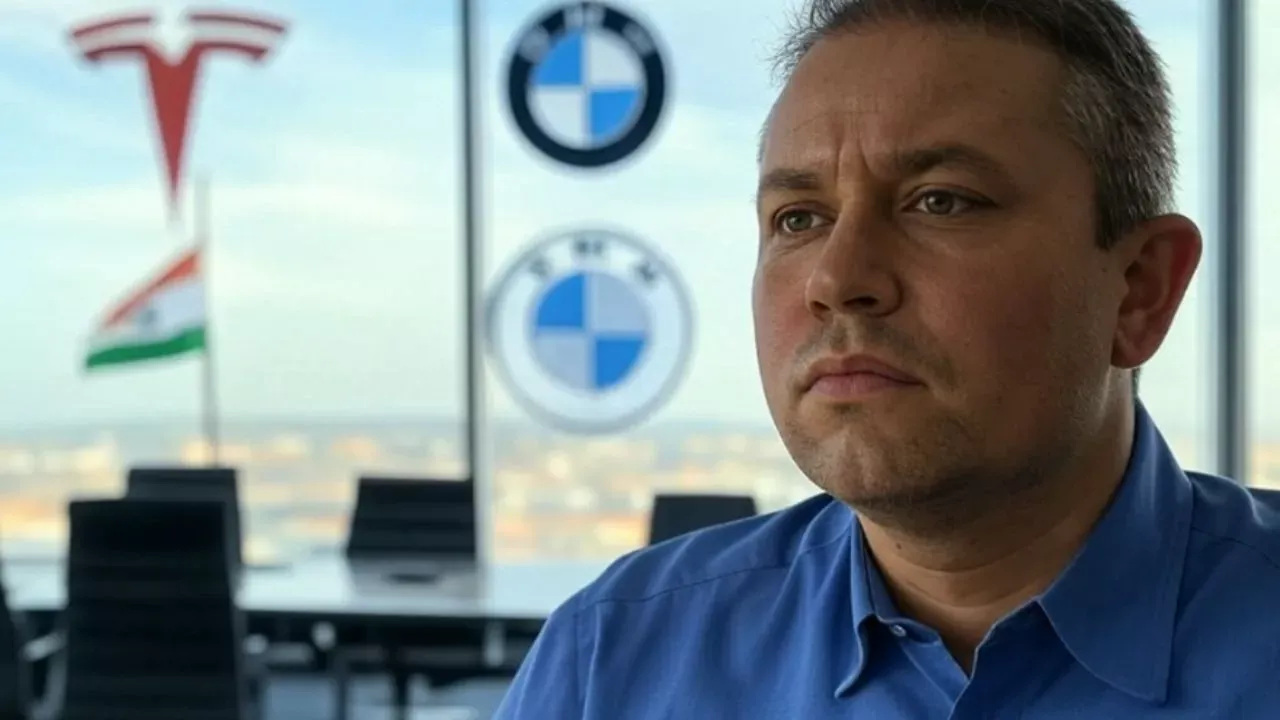New Delhi, April 19, 2025 – India’s ambitious push to become a global hub for electric vehicles (EVs) has hit a roadblock. Major international carmakers like Tesla, Volkswagen, BMW, and Mercedes-Benz have put their plans to invest in India on hold, even though the government introduced a new EV policy offering attractive benefits. The policy, which slashes import duties from as high as 110% to just 15% for companies investing $500 million in local manufacturing, was designed to lure global players. However, these companies are waiting for better terms through trade agreements, leaving India’s EV dreams in limbo.
What Is India’s New EV Policy?
In March 2024, the Indian government unveiled the Scheme for Manufacturing of Electric Cars Policy (SMEPCI). The goal was to attract global automakers to set up factories in India, create jobs, and boost the country’s EV industry. The policy offers big incentives, including:
- Lower Import Duties: Companies can import up to 8,000 premium EVs (priced above $35,000 or roughly ₹30 lakh) each year at a reduced import duty of 15%, down from 70-110%.
- Investment Requirement: Automakers must invest at least $500 million (₹4,150 crore) in India within three years to build manufacturing facilities or charging infrastructure.
- Local Production Goals: Companies need to source 25% of their EV components locally within three years and 50% within five years.
- Bank Guarantees: To ensure commitment, companies must provide a bank guarantee to cover the import duty savings, which could be as high as $790 million.
The government hoped this policy would bring in giants like Tesla, which has long shown interest in India’s growing car market. Commerce Minister Piyush Goyal said, “We invite global companies to come to India. I’m confident India will become a global hub for EV manufacturing.”
Why Are Global Carmakers Hesitant?
Despite the incentives, major automakers are holding back. Here’s why:
Waiting for Trade Agreements:
- Companies like Tesla, Volkswagen, BMW, and Mercedes-Benz are eyeing free trade agreements (FTAs) or bilateral trade agreements (BTAs) with India. These deals could offer even lower tariffs or relaxed investment rules. For example, ongoing trade talks with the United States, the European Union, and the United Kingdom might lead to tariff cuts without requiring a $500 million investment.
- Posts on X reflect this sentiment, noting that global EV majors are “demanding better FTAs” before committing to India’s policy.
High Investment Risks:
- The $500 million investment is a big ask, especially since India’s premium EV market (cars priced above ₹30 lakh) is still small, making up just 2% of total car sales. Automakers worry about low demand for expensive EVs, which could make their investments unprofitable.
- Luxury carmakers like Mercedes and BMW say the Indian market isn’t ready for large-scale premium EV production. BMW’s India head, Vikram Pawah, stated, “We will start producing EVs locally only when sales volumes justify it.”
Strict Localization Rules:
- The policy’s requirement to source 25% of components locally within three years and 50% within five years is seen as challenging. India’s EV supply chain is still developing, and sourcing high-quality parts locally can be difficult. Non-compliance could lead to the government seizing the bank guarantee, adding financial risk.
Policy Uncertainty:
- Frequent changes in India’s EV policies have made companies cautious. The government is still finalizing the SMEPCI guidelines, and automakers are waiting for clarity. For instance, Hyundai has asked for more flexibility, such as allowing 75% of the $500 million to be invested in the first three years instead of 100%.
- Industry insiders say the delay in releasing final guidelines is due to a “lukewarm response” from automakers, who want firm commitments from players like Tesla before moving forward.
Competition from Domestic Players:
- Indian carmakers like Tata Motors and Mahindra & Mahindra have lobbied against lowering import duties, fearing it will hurt their own EV investments. Tata, which dominates India’s EV market, and Mahindra, set to launch new electric SUVs in 2025, worry that cheaper imports could flood the market.
Impact on India’s EV Goals
India aims for 30% of its car sales to be electric by 2030, but EVs currently account for just 2.5% of the 4.3 million cars sold in 2024. The hesitation from global automakers could slow progress toward this target. Without major players investing in local manufacturing, India may struggle to build a robust EV ecosystem, including charging stations and battery production.
The policy was meant to make premium EVs more affordable for Indian buyers. For example, a Tesla Model Y, currently priced at ₹70 lakh due to high import duties, could drop by ₹15-20 lakh if tariffs are reduced. However, if global companies opt for imports under trade agreements instead of local production, it could weaken India’s manufacturing goals and hurt domestic players.
Tesla’s Role and Trump’s Influence
Tesla, in particular, has been a focal point of India’s EV policy. CEO Elon Musk has expressed interest in India but has hesitated due to high import duties and the $500 million investment requirement. Recent reports suggest Tesla has leased showroom space in Mumbai but is waiting for better trade terms, possibly influenced by U.S. trade policies under President Donald Trump.
Trump’s push for lower tariffs in bilateral trade talks with India has added complexity. Indian automakers fear that a U.S. trade deal could set a precedent for similar agreements with the EU and UK, allowing cheaper EV imports and intensifying competition.
What’s Next for India’s EV Industry?
The Indian government is trying to address automakers’ concerns. It plans to host a second workshop to clarify the SMEPCI policy, following an initial session in April 2024 that included Tata Motors, Hyundai, BMW, and Mercedes. The Heavy Industries Ministry is expected to finalize the policy soon, with applications opening within months. Approval letters could be issued by July-August 2025, allowing imports to begin.
However, experts warn that India must balance its goals of attracting foreign investment and protecting local manufacturers. Puneet Gupta from S&P Global Mobility said, “The policy seems tailored for new entrants like Tesla, but established players are wary of rigid rules and low demand.”
Meanwhile, some foreign automakers are moving forward. Vietnam’s VinFast has committed $500 million to build an EV factory in Tamil Nadu, aiming to produce 150,000 vehicles annually. This shows that India’s policy can work for some, but bigger players like Tesla and Volkswagen need more convincing.
Conclusion
India’s new EV policy was a bold step to put the country on the global EV map, but the hesitation from major automakers highlights the challenges ahead. As global companies wait for better trade deals, India faces a tough choice: offer more concessions to attract giants like Tesla or protect its homegrown EV industry. The coming months will be crucial as trade talks progress and the government finalizes its policy. For now, India’s EV revolution is at a crossroads, with the world watching closely.

